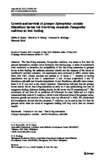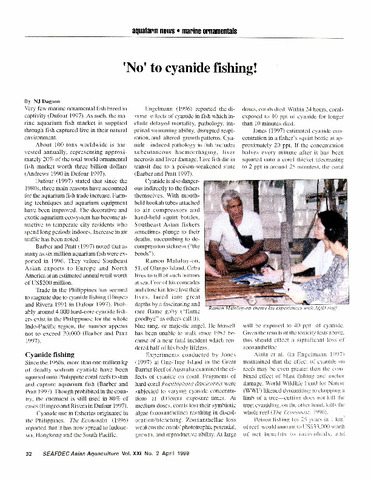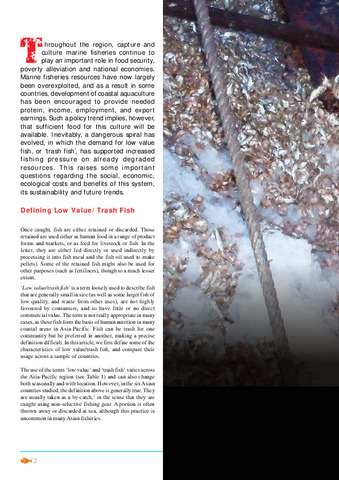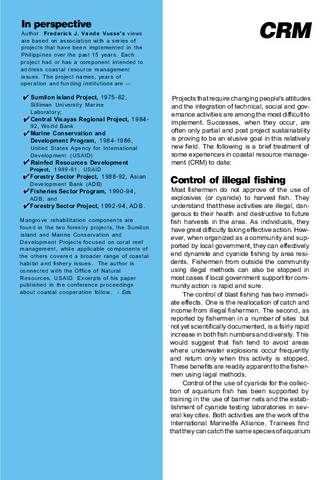Growth and survival of grouper Epinephelus coioides (Hamilton) larvae fed free-living nematode Panagrellus redivivus at first feeding
Share
Abstract
The free-living nematode, Panagrellus redivivus, was tested as live food for grouper Epinephelus coioides larvae during the first feeding stage. A series of experiments were conducted to determine the acceptability of the free-living nematodes in grouper larvae at first feeding, the optimum nematode density and the response of the larvae to nutritionally enriched nematode. All experiments were conducted in 200-L conical tanks filled with 150-L filtered seawater and stocked at 15 larvae L−1. Duration of feeding experiments was up to day 21 (experiment 1) and 14 days (experiment 2 and 3). Brachionus plicatilis and Artemia (experiment 1) and Brachionus plicatilis alone (experiment 2 & 3) was used as the control treatment. Observations indicated that the grouper larvae readily fed on free-living nematodes as early as 3 days posthatching, the start of exogenous feeding. Optimum feeding density for the larvae was 75 nematodes ml−1. The enrichment of cod liver oil or sunflower oil influenced the total lipids and n-3 highly unsaturated fatty acids of P. redivivus, which in turn influenced those of the grouper larvae, however, growth and survival of the larvae were not affected (P > 0.05). The results from this investigation showed that the nematode, P. redivivus, can be used as first live food for grouper larvae from the onset of exogenous feeding until they could feed on Artemia nauplii.
Suggested Citation
Reyes, O. S., Duray, M. N., Santiago, C. B., & Ricci, M. (2011). Growth and survival of grouper Epinephelus coioides (Hamilton) larvae fed free-living nematode Panagrellus redivivus at first feeding. Aquaculture International , 19(1), 155-164. https://doi.org/10.1007/s10499-010-9349-0
Subject
Taxonomic term
Collections
- AQD Journal Articles [1248]
Related items
Showing items related by title, author, creator and subject.
-
'No' to cyanide fishing!
Dagoon, N. J. (Aquaculture Department, Southeast Asian Fisheries Development Center, 1999) -
Prized commodity: Low value/trash fish from marine fisheries in the Asia-pacific region
Staples, Derek; Funge-Smith, Simon (Secretariat, Southeast Asian Fisheries Development Center, 2005)The use of the terms 'low value' and 'trash fish' varies across the Asia-Pacific region and can also change both seasonally and with location. This article defines low value/trash fish as 'Fish that have a low commercial ... -
CRM in the Philippines: Lessons learned
Southeast Asian Fisheries Development Center, Aquaculture Department (Aquaculture Department, Southeast Asian Fisheries Development Center, 1996)Philippine coastal communities can become capable fishery resource managers and that their management practices can become largely self-sustaining if the project approach focuses on assisting fishermen to learn how to help ...




